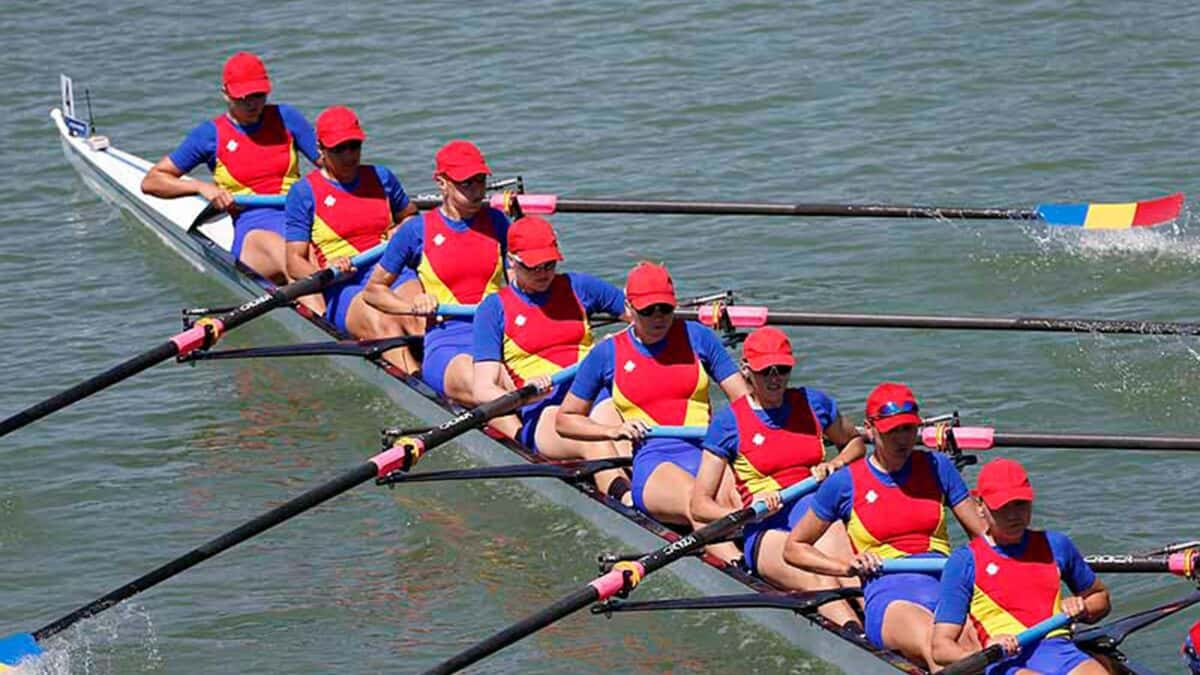
05 Jun 2014
Growth of the European rowing eight
Until last year, the European Rowing Championships were scheduled at the end of the rowing season, and the level of participation did not reach its full potential. Now it is programmed into the start of the season and in Belgrade, Serbia for this year’s European Rowing Championships a record nine women’s eights and 11 men’s eights all vied for the podium.
These crews experienced arriving at the start line for their race along with 53 other individuals. They know that they are minutes away from the organised chaos that is an international start. From pre-rows, to race warm-up, to the race itself, the visibility of the eight is unmistakable. The sound of eight oars completing a stroke in unison is audible along with the coxswain’s ever present voice.
Noteworthy returns to the start line of the women’s eight at the European Championships included France and the Netherlands. They had been absent since 2010. The men’s eight of Russia also was a noteworthy entry. Russia recently hired former Canadian men’s eight coach, Mike Spracklen. This is Spracklen’s most recent project and his crew made its debut on the continental stage in a way that would have heads turning all over the world by finishing second overall.
From a spectator point of view, the allure of the eight includes the aesthetics of eight bodies moving as one. While all boat classes race at full exertion, the eight travels at a velocity that is much closer to maximal throughout the race. Moves must happen quickly and with full commitment, otherwise the opportunity to attack can be lost in a split second. The athletes know that these attacks are carefully orchestrated by the coxswain and reward for execution lies on the podium.
What is it like to sit on the line and know that chaos will ensue in a matter of moments?
Ae-Ri Noort, coxswain for the Dutch women’s eight states, “I’m usually pretty relaxed at the start. I am confident in my crew and for me I am enjoying the moment. The excitement before the start is the best and when we have great strokes as a crew, that’s it for me.”
What is the draw of the European Championships for these crews?
Zoe de Toledo of Great Britain, who coxes the women’s eight, gave some insight. “It’s always interesting to see how different nations react. It helped this event (European Championships) that the first World Cup was so far away and that Europe is a major hub for rowing in the world so you know you are always going to get good competition.”
When asked why the eight is such an exciting boat, Ruben Knab who rows in two seat of the men’s eight for the Netherlands gave an interesting insight into the inner workings. “The eight is the fastest boat. When you are in an eight, it’s like a big machine. When everything is right you really feel like you are one of the gears turning in sync with all of the other gears.” Favourite seat to row? Ruben was quick to respond. “I like the back of the boat. You can really see everything happening and feel the (best) parts of the rhythm. There are some nice tricks in the bow seat that you can use to send a message to the front of the boat.”
Both the women’s and men’s eight were no exemption to a high level of racing at the European Championships. As the event grows in Europe, spectators and athletes alike can highly anticipate races to come.
Copy thanks to Kristen Kit

